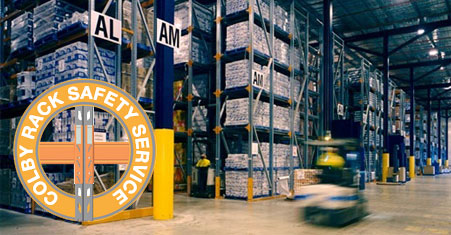How Often Pallet Racking Should Be Inspected
If pallet racking is installed correctly, it can be very safe. However, even when properly installed, pallet racking does pose a danger. Due to accidents, incorrect loading, and simple wear and tear, pallet racking can become damaged over time. This damage creates risks of pallets falling or even the pallet racking collapsing. All of this can cause injury or death to warehouse workers and damage to goods and warehouse equipment.
Because of this, pallet racking should be inspected regularly to ensure any damage is found and repaired quickly.
Minimal Pallet Racking Inspection Frequency
AS 4084:23 says that pallet racking needs to be professionally inspected at least once every twelve months. Because of this, we offer pallet racking inspections. These formal inspections are a good time for a fresh set of eyes to make sure your pallet racking is operating safely and a time to identify anything that needs to be fixed or repaired.
During an inspection, pallet racking is evaluated to make sure there is no damage to the pallet racking itself or any pallet racking protection installed. Damage does not necessarily just mean dents and corrosion though. The racking is also assessed for any bowing or warping that may be created by incorrect or heavy loads.
Once a yearly inspection has been completed and any issues rectified, according to the AS 4084:23, the racking doesn’t need to be inspected for another 12 months. However, there’s a lot that can be done between inspections to not only make sure it operates safely, but also pre-empt any larger maintenance issues, thereby saving time and money on larger repairs.
Conducting Your Own Regular Racking Inspections
As mentioned, we advise businesses to conduct their own pallet racking inspections between their yearly inspections. Although a yearly inspection needs to be done by a professional third party, a business owner or warehouse manager inspecting pallet racking themselves can make sure damage is found early. This eliminates surprises during the inspection and also makes sure repairs can be made quickly before they become a bigger problem. If the damage has come from an overloading or operational problem, it can be corrected before it happens again.
Monthly Pallet Racking Inspection Checklist
Warehouses can be busy places, and it can be difficult to find the extra time to conduct a yearly inspection, let alone a monthly one, but if a business is able to stay on top on maintenance, it can save time in the long term.
Because of this, we suggest allotting time to inspect pallet racking monthly. This can be done by the business owner or the warehouse manager. This wouldn’t be as in depth as the yearly inspection, but it’s designed to find pallet racking damage and maintenance issues before it gets too bad. Look for things like:
- Visual damage to pallet racking beams, uprights, and pallet racking protection.
- Visual corrosion to pallet racking beams, uprights, and protection.
- Warping or pallet racking.
- Pallets are in generally good condition and place properly.
- Pallet racking anchors look secure and well maintained.
- Load signs are installed and correct.
In addition to monthly inspections, if there’s an accident, such as a collision between a forklift and pallet racking, conduct an inspection to make sure all damage is found.
This doesn’t need to be overly laborious or time consuming. After all, the idea here is to save time.
Have A Culture Of Daily Checks
Although a formal daily check may be overly time consuming for management, creating a culture of safety helps create a culture of daily checks by warehouse workers in their working area. Warehouse workers may work throughout the warehouse, seeing every inch of it throughout the day, or they may work in one particular area, making them able to concentrate on one particular set of bays. Either way, this means that warehouse owners and managers have multiple sets of eyes in a warehouse that can report any damage with pallet racking. This is how you get daily checks without having to take extra time to do them.
The important thing, though, is that a warehouse needs the right safety culture for workers to feel comfortable to report any potential issues with pallet racking, no matter how small that issue may be. The worst case scenario if an employee is being overly cautious is that something turns out not to be a problem and the employee knows what to look out for in the future.
Again, this is all about recognising pallet racking damage early so that costs and downtime from repair are minimised. If damage isn’t found until an annual inspection, it may be bigger and it may mean pallet racking can’t be used until it’s fixed.
If You Have Pallet Racking Damage, Give Us A Call
If you find that your pallet racking needs fixing, contact us today. The faster your pallet racking is fixed, the more safe your warehouse will be and more faster you’ll be back to full operations.


Comments are closed.